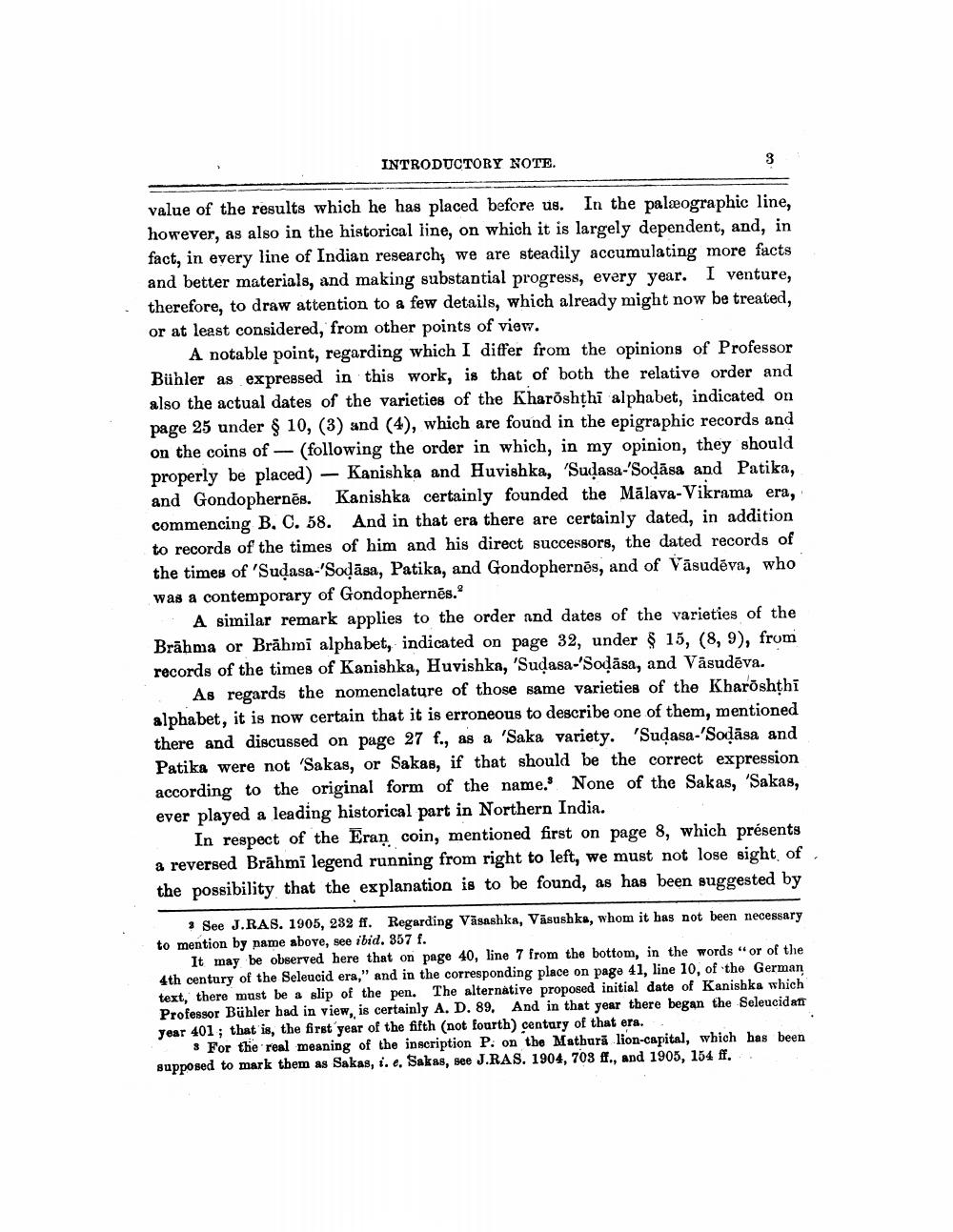________________
INTRODUCTORY NOTE.
3
value of the results which he has placed before us. In the palæographic line, however, as also in the historical line, on which it is largely dependent, and, in fact, in every line of Indian research; we are steadily accumulating more facts and better materials, and making substantial progress, every year. I venture, therefore, to draw attention to a few details, which already might now be treated, or at least considered, from other points of view.
A notable point, regarding which I differ from the opinions of Professor Bühler as expressed in this work, is that of both the relative order and also the actual dates of the varieties of the Kharoshthi alphabet, indicated on page 25 under $ 10, (3) and (4), which are found in the epigraphic records and on the coins of - (following the order in which, in my opinion, they should properly be placed) - Kanishka and Huvishka, 'Sudasa-Sodāsa and Patika, and Gondophernēs. Kanishka certainly founded the Mālava-Vikrama era, commencing B, C. 58. And in that era there are certainly dated, in addition to records of the times of him and his direct successors, the dated records of the times of 'Sudasa-'Sodāsa, Patika, and Gondophernēs, and of Vāsudēva, who was a contemporary of Gondophernēs.
A similar remark applies to the order and dates of the varieties of the Brāhma or Brāhmi alphabet, indicated on page 32, under $ 15, (8, 9), frum records of the times of Kanishka, Huvishka, 'Sudasa-Sodāsa, and Vāsudēva.
As regards the nomenclature of those same varieties of the Kharðshthi alphabet, it is now certain that it is erroneous to describe one of them, mentioned there and discussed on page 27 f., as a Saka variety. 'Sudasa-'Sodāsa and Patika were not "Sakas, or Sakas, if that should be the correct expression according to the original form of the name. None of the Sakas, "Sakas, ever played a leading historical part in Northern India.
In respect of the Eran coin, mentioned first on page 8, which présents a reversed Brähmi legend running from right to left, we must not lose sight of the possibility that the explanation is to be found, as has been suggested by
See J.RAS. 1905, 282 ff. Regarding Vāsashka, Väsushka, whom it has not been necessary to mention by name above, see ibid. 357 f.
It may be observed here that on page 40, line 7 from the bottom, in the words or of the 4th century of the Seleucid era," and in the corresponding place on page 41, line 10, of the German text, there must be a slip of the pen. The alternative proposed initial date of Kanishka which Professor Bühler had in view, is certainly A. D. 89, And in that year there began the Seleucidati year 401; that is, the first year of the fifth (not fourth) century of that era.
For the real meaning of the inscription P. on the Mathură lion-capital, which has been supposed to mark them as Sakas, i. e. Sakas, see J.RAS. 1904, 703 ff., and 1903, 104 ff.




